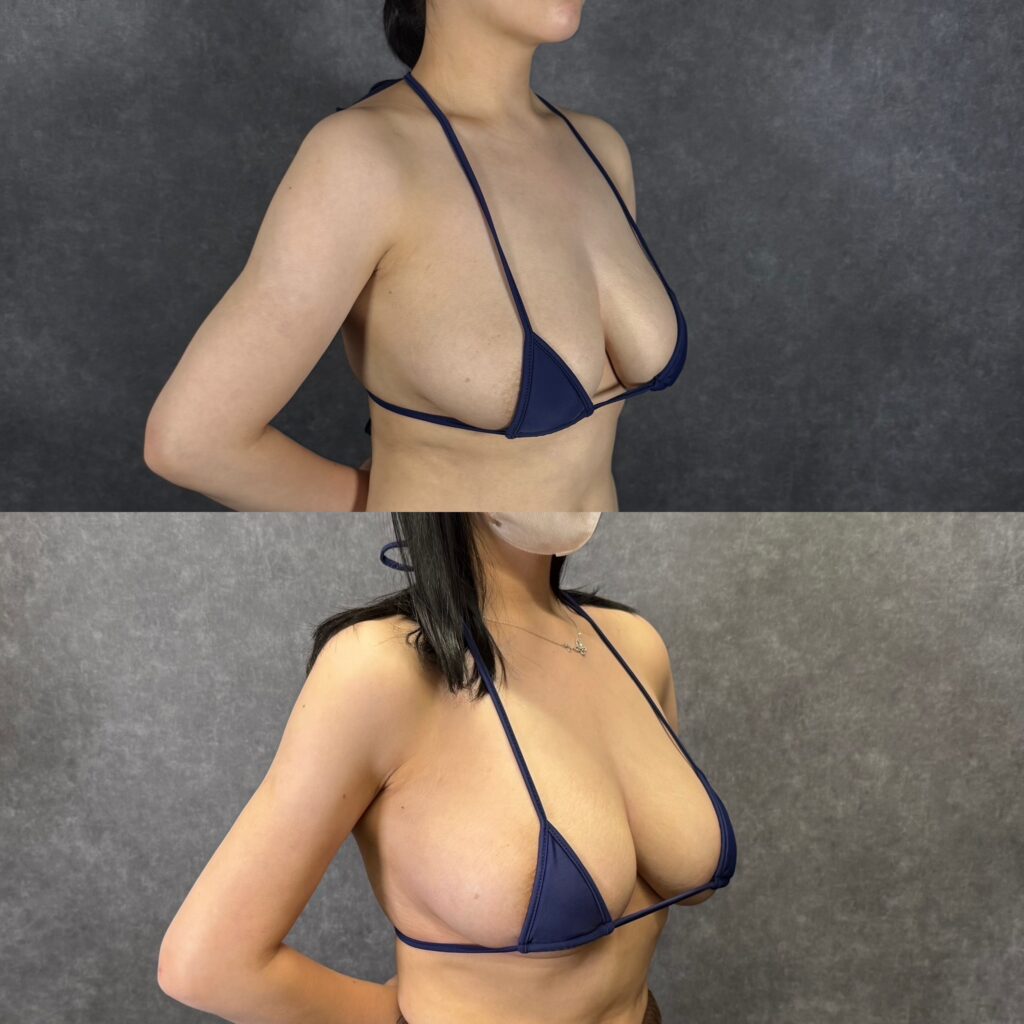Understanding Fat Graft Breast Augmentation and Retention2025.10.24
This case involves a 24-year-old woman who underwent a secondary fat graft breast augmentation, three months after her first procedure. In this session, 380cc was injected on the right and 350cc on the left, which is larger than the typical amount for Japanese women.

For most Japanese patients, around 300cc per side is considered the safe limit for a single fat transfer. Injecting more than that in one session may increase the risk of fat necrosis or lumps, as the transplanted fat cells need sufficient blood supply to survive.
However, some patients can safely receive a higher fat volume depending on their physical condition and history.
✔︎ Post-pregnancy patients — After pregnancy and breastfeeding, the breast tissue expands and contracts, leaving more space under the skin for fat grafting.
✔︎ Patients with major weight loss (10kg or more) — Fat volume in the breast decreases and the skin tends to loosen slightly, creating enough room for added fat.
In this case, the patient had previously undergone childbirth and this was her second procedure, allowing for excellent retention and volume stability even three months postoperatively.
The average fat graft survival rate is around 40–60%, but results depend on several factors: the method of fat harvesting and purification, injection technique, postoperative care, and the patient’s body condition.
At AVAN TOKYO, we do not simply inject fat — we carefully create the optimal conditions for the transplanted fat to survive and integrate naturally. Every patient receives a personalized surgical plan based on anatomy, tissue elasticity, and desired shape.
For those seeking additional enhancement, we also offer hybrid breast augmentation, combining silicone implants (for volume) with fat grafting (for softness and contour) to achieve a balanced and natural aesthetic.



